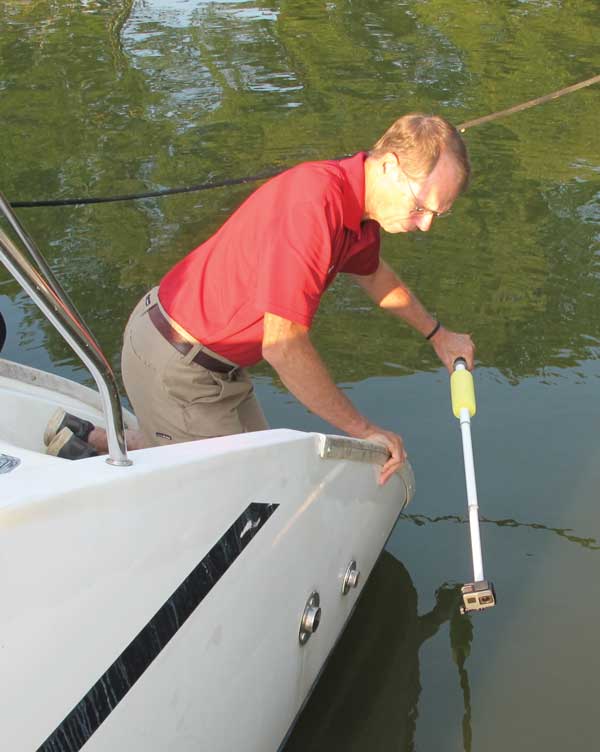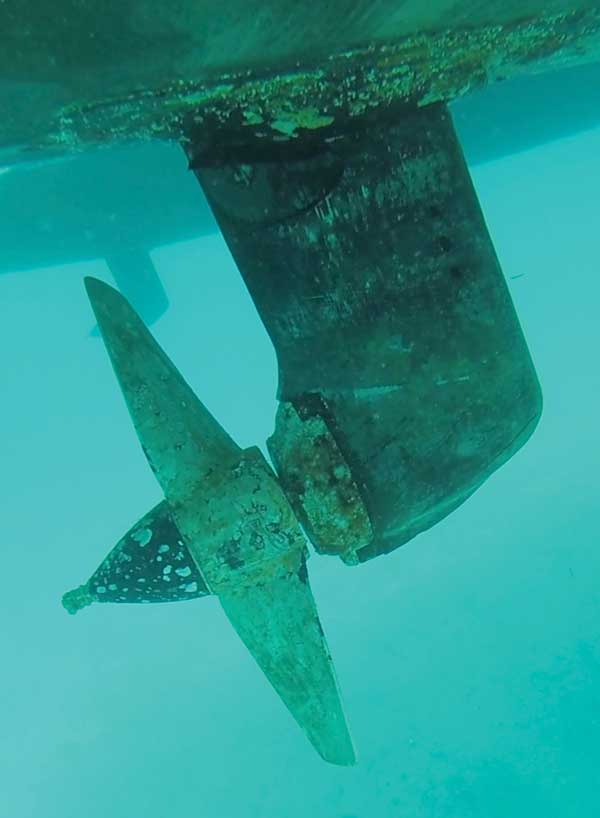In our Ask the Expert column, we regularly ask Terry Slattery, a graduate engineer and bluewater cruiser who does all his own boat maintenance, to suggest an unusual tool or gadget to add to your onboard toolkit. This month’s suggestion: a “sports camera” that has WiFi connectivity. You can use it on the top of your trawler mast, the bottom of your keel, or anywhere in between. Here’s how to use it.

Q. You once recommended that boaters buy a “sports camera” to use in operating and maintaining their boats. What did you have in mind—taking a selfie at every waypoint or something?
A. No, it’s time to get serious here. I was talking about a camera like the GoPro that’s lightweight, waterproof, and enables you to see in hard-to-reach places, such as the top of a mast (on a sailboat or trawler) or around the propeller when the boat is still in the water.
Q. Can you give me a few examples?
A. Here are several from my recent experience:
Confirming whether you’ll be able to make way under a bridge after a storm that has raised the water level substantially. Mount the camera on a boat hook, tie the boat hook to a halyard, and run it up the mast so that the camera faces forward and is above the masthead equipment. Use the WiFi transmitting capability to see what the camera shows in real time. Approach the bridge slowly and stop just before you get to it. Turn on the camera.
The video will show you exactly what you’d see if you were up at the top of the mast and could view the bridge horizontally from there. And the camera will transmit that image (or video) to your tablet or smartphone. (If you tried taking the photo from deck level, the sharp angle would distort the picture.) If you can see the bottom of the bridge beams, the camera will clear them.
Checking on where the reefs and rocks are located in the waters immediately surrounding your boat. Just send the camera up the mast with the lens pointed down toward the water, and the image that it transmits will show the differences in the color of the water in those areas that indicate shoals. You’ll find it easier to use than relying on a depth-finder.
Checking your propeller or rudder for physical damage, entangling lines or nets, or marine growth. Mount the camera on an extended boat hook, lower it into the water, and activate the camera. Presto! You’ll have a close-up view of what’s going on. You can also use it for inspecting for cracks in your fiberglass hull, both internally and externally. It’s also great for looking for the boat part that you dropped in the bill or under the engine. Caveats: You need clear water for this to succeed. The WiFi connection to your tablet won’t work when the camera is submerged because water absorbs the wireless signal. But you can play back the video after you bring your camera out of the water again.

Sizing up a hard-to-get-to bulkhead hole into which you want to insert an exhaust hose. Use a flashlight to illuminate the entire area, and then set up a video shot of the hole and hose with your camera. I was able to use this method while installing a generator exhaust hose through a hole from six feet away, and adjust the angle of my hose as needed.
Checking for proper sealing on a refrigerator from the inside. You need a light inside the refrigerator for this one. A wireless connection from the camera to my tablet enables me to see the sealing as the door closes.
Q. How much does a camera like this cost?
A. A basic model GoPro starts at just under $300. Other manufacturers make similar cameras at competitive prices. Make sure you get a waterproof model!
About the Author: Art Pine is a Coast Guard-licensed captain and a longtime powerboater and sailor on the Chesapeake.